Why Do Dogs Roll in the Grass? Reasons Behind This Behavior
Uncover the fascinating reasons why dogs roll in the grass and what this joyful behavior says about their health and happiness.
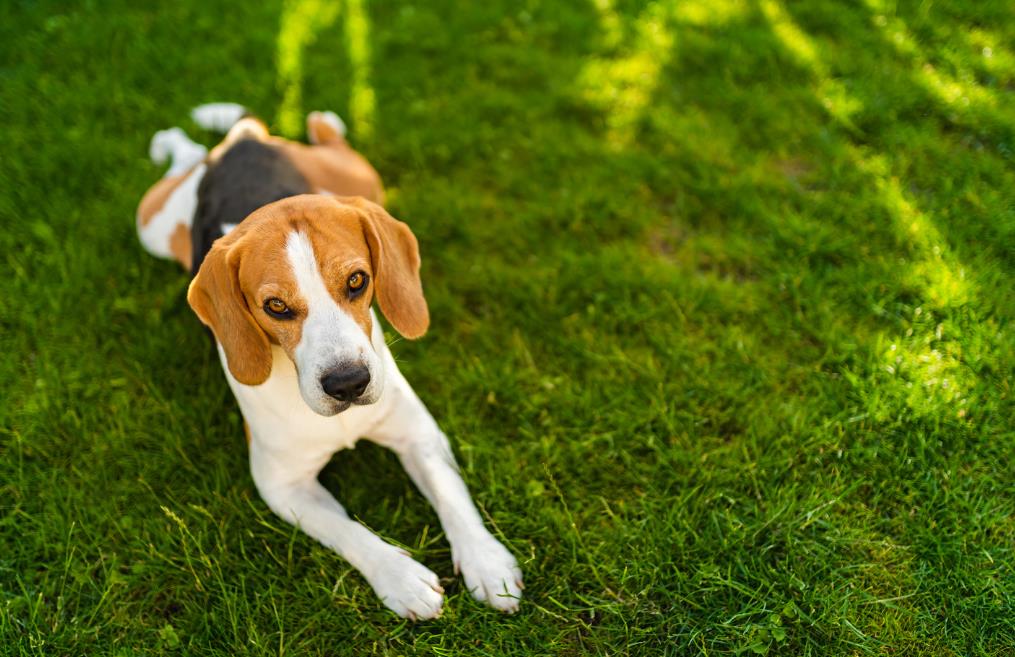
Have you ever wondered why dogs love rolling in the grass? It’s a behavior that seems both natural and puzzling at the same time. What drives them to flop over and wiggle around on the ground randomly? Is there a deeper meaning behind this seemingly playful act? Let’s uncover the secrets behind why dogs engage in this behavior and explore the fascinating reasons that lie beneath the surface.
One of the main reasons dogs roll in the grass is scent. Dogs have an incredible sense of smell, and they use it to interact with the world around them. Rolling in the grass allows them to mask their scent, creating a disguise to help them approach unsuspecting prey or potential targets without being detected. But that’s not all – rolling in the grass also allows dogs to leave their own unique scent stamp, marking their territory and communicating with other canines in the area.
But it’s not just about scent – rolling in the grass can also give dogs a pleasurable sensation. The feeling of the grass against their fur can be soothing and enjoyable, giving them a sensory experience that they find irresistible. So, next time you see your furry friend indulging in a grassy roll, remember that it’s not just a random act – there are deeper reasons behind this behavior, driven by their innate instincts and sensory preferences.
Why Do Dogs Roll in the Grass?
Unveiling the Scent-Related Motives for Dogs Rolling in Grass
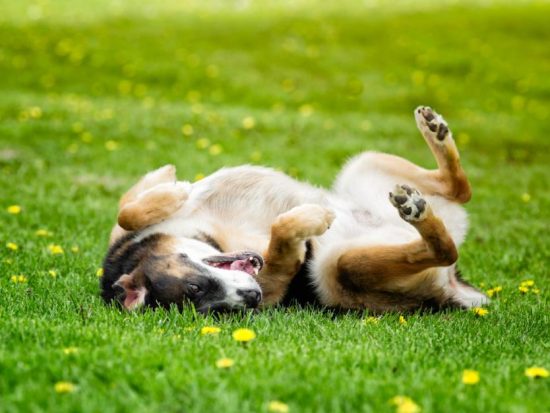
When you see your dog rolling in the grass, it may seem like a peculiar behavior. However, there are fascinating reasons behind this seemingly odd activity. Dogs, with their highly developed sense of smell, have scent-related motives for rolling in the grass, which serves various functions. Understanding these motives can provide valuable insight into your furry friend’s behavior.
The Predatory Instincts: Masking and Tracking Smells
Dogs have a strong predatory instinct that drives them to engage in rolling behavior. Rolling in the grass allows dogs to mask their scent, making it easier for them to approach prey without being detected. This instinctual behavior harkens back to their ancestral roots as hunters, giving them an advantage when stalking potential targets. Additionally, rolling in the grass helps dogs track smells and gather information about their environment, enabling them to navigate their surroundings more effectively.
Creating a Personalized Scent Stamp in Their Environment
Rolling in the grass allows dogs to leave their own unique scent behind. By doing so, they create a personalized scent stamp in their environment, marking their presence and territory. This scent serves as a form of communication, conveying important information to other dogs in the area. Through this scent-based messaging system, dogs can establish territorial boundaries and communicate their reproductive status, health, and more.
Communicating with Other Canines Through Scents
Rolling in the grass enables dogs to communicate with their canine counterparts through scents. By leaving their unique scent behind, dogs are able to convey information and establish social connections with other dogs. It’s a way for them to share vital messages and maintain communication within their social groups. This scent-based communication plays a crucial role in the intricate social dynamics of dogs.
To visually illustrate the concept, take a look at the image below:
| Reasons | Description |
|---|---|
| Predatory Instincts | Dogs roll in the grass to mask their scent and track smells, harking back to their ancestral predatory instincts. |
| Personalized Scent Stamp | Rolling in the grass leaves behind a personalized scent stamp that marks territory and communicates information to other dogs. |
| Communication | Through scent-based communication, dogs can convey messages and foster social connections with other canines. |
Exploring the Canine Joy In Rolling Behavior
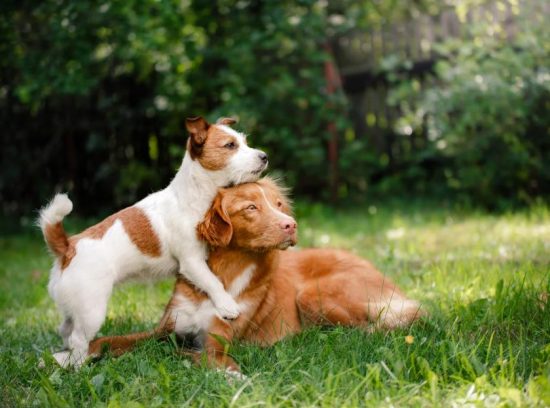
Dogs find immense joy in rolling in the grass, and it provides them with a pleasurable sensory experience. The feeling of the grass on their fur is incredibly enjoyable for dogs, and they often express their delight by rolling on their backs and wiggling with excitement. It’s a way for them to fully immerse themselves in the sensation of the grass against their bodies, creating a blissful experience.
While it’s not possible to definitively determine if dogs are happy when they engage in this behavior, their relaxed body language and playful demeanor suggest that they indeed find it pleasurable and enjoyable. It’s a display of contentment that brings them a sense of satisfaction and contributes to their overall well-being. Rolling in the grass provides dogs with a range of sensory experiences and stimuli. The scent, texture, and feeling of the grass on their fur evoke positive sensations that dogs seek out. It’s a playful behavior that allows them to engage with the world around them, satisfying their curiosity and bringing them a sense of joy.
While the exact reason for their happiness during this behavior may remain unclear, it’s evident that dogs immensely enjoy rolling in the grass. So, the next time you see your furry friend indulging in this delightful activity, take a moment to appreciate their sheer happiness and embrace the simple pleasures that nature brings to their lives.
Canine Communication: Why Dogs Leave Their Scent Behind
Dogs have an incredible ability to communicate through scent. When dogs roll in the grass, they leave their scent behind as a way to convey important information to other dogs. This behavior is deeply ingrained in their instincts and plays a crucial role in their social interactions.
By rolling in the grass, dogs establish territory boundaries, mark their presence, and communicate various aspects of their identity. This includes information about their reproductive status, health, and more. It’s like leaving a personalized message for other dogs to interpret. Just as humans leave fingerprints or footprints to mark their presence, dogs leave their unique scent stamp in their environment. This helps them establish their territory and communicate to other dogs that this space belongs to them.
Furthermore, leaving their scent behind is a way for dogs to communicate their reproductive availability. Female dogs in heat will often roll in the grass, depositing their scent to attract potential mates. Male dogs may also roll in areas where females have marked their presence, indicating their interest in mating.
While rolling in the grass and leaving scent is a natural behavior for dogs, it’s important for owners to understand and respect their canine companions’ need to communicate through scent. It allows them to establish social bonds, communicate effectively, and navigate their world using their incredible sense of smell.
| Reasons for Dogs Leaving Their Scent Behind | Examples |
|---|---|
| Establishing territory boundaries | A dog rolling in the grass near the perimeter of their home to mark their territory. |
| Communicating reproductive availability | A female dog rolling in the grass during her heat cycle to attract potential mates. |
| Conveying information about health and identity | A dog rolling in the grass after visiting the vet clinic, leaving their scent to communicate their current health status to other dogs. |
Understanding why dogs leave their scent behind is fascinating and can deepen our connection with our furry friends. By allowing them to engage in this natural behavior, we support their instinctual need to communicate and express themselves through scent.
Medical and Physical Reasons for Rolling on Grass
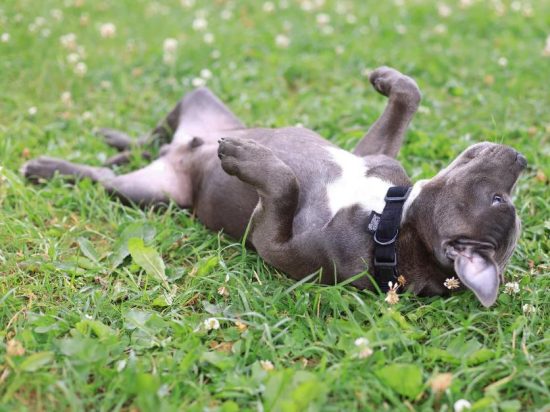
While rolling in the grass is often a natural and harmless behavior for dogs, it can also serve as an indication of underlying medical or physical issues. One reason why dogs may roll in the grass is to scratch an irresistible itch that they can’t reach with their paws alone. This behavior is typically occasional and not a cause for concern.
However, if you notice that your dog frequently rolls and scratches, it may be a sign of an underlying skin condition or allergies. Dogs with allergies may roll in the grass to relieve itching caused by environmental allergens. It’s essential to pay attention to any additional symptoms your dog may be experiencing, such as excessive scratching, hair loss, redness, or inflammation.
If you suspect that your dog has allergies or a skin condition, it’s important to consult with a veterinarian for proper diagnosis and treatment. Allergies can be managed through various approaches, including medication, dietary changes, and environmental modifications. Identifying underlying allergies and skin conditions will help ensure the well-being and comfort of your furry friend.
Managing and Redirecting the Grass-Rolling Behavior
As a responsible dog owner, it’s essential to manage and redirect your dog’s grass-rolling behavior when necessary. While rolling in the grass is a natural behavior, there are situations where it may not be appropriate or safe for your furry friend. By understanding when to allow rolling and when to intervene, you can ensure the well-being of your dog while still allowing them to engage in this instinctual behavior.
When to Allow Rolling and When to Intervene
Allowing your dog to roll in the grass can be a positive and enriching experience. However, it’s crucial to consider the cleanliness and safety of the environment. If the grass has been treated with chemicals, such as pesticides or fertilizers, it’s best to intervene and prevent your dog from rolling. These chemicals can be harmful if ingested or absorbed through the skin.
Similarly, if you notice your dog rolling in feces or other unsanitary substances, it’s important to redirect their behavior immediately. Rolling in such substances can pose health risks and lead to the transmission of parasites or bacteria.
On the other hand, if the grass is clean and safe, allowing your dog to roll can be a beneficial activity. It provides mental stimulation, allows them to connect with their primal instincts, and can be a source of joy and relaxation for your furry companion.
Training Tips: Using Positive Reinforcement to Redirect Behavior
Positive reinforcement training techniques can be highly effective if you find the need to redirect your dog’s grass-rolling behavior. You can redirect their focus and reinforce positive habits by rewarding your dog for engaging in more desirable behaviors.
When you notice your dog starting to roll in the grass in an inappropriate or unsafe situation, gently guide them away using a leash or verbal cue. Once they are away from the area, offer them a high-value treat, praise, and affection. This positive reinforcement will help them associate the redirected behavior with positive outcomes.
Consistency is key in training. Be patient and persistent, and consistently reward your dog for engaging in alternative behaviors, such as sitting or playing with a toy, instead of rolling in the grass.
Remember, redirecting your dog’s grass-rolling behavior should always be done in a positive and nurturing manner. Punishment or harsh corrections can cause fear or anxiety in your dog, leading to adverse behavioral issues. By managing and redirecting your dog’s grass-rolling behavior, you can ensure their safety while still allowing them to enjoy this instinctual activity in appropriate and safe circumstances.
Establishing Boundaries: Knowing When to Let Your Dog Indulge
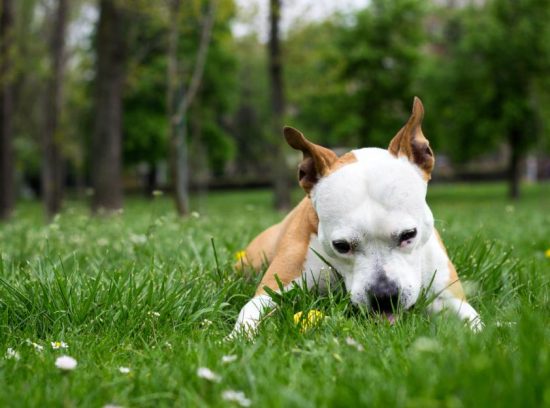
Dog owners play a crucial role in establishing boundaries for their furry companions. When it comes to allowing dogs to indulge in grass-rolling, it’s essential to consider factors such as the cleanliness and safety of the grass. Ensuring that the grass is free from harmful chemicals, allergens, and unsanitary substances is key to keeping your dog safe and healthy.
To assess the cleanliness and safety of the grass, you can take several steps:
-
Keep the grass well-trimmed and free from debris, including sharp objects, toxic plants, and harmful substances.
-
Avoid using pesticides, herbicides, or fertilizers on the grass to prevent potential harm to your dog.
-
Keep an eye out for any signs of infestations, such as ticks or fleas, that could pose risks to your dog’s health. Additionally, be cautious of areas where other animals frequently visit or defecate, as this can lead to potential contamination.
Understanding your dog’s behavior and body language is also important in determining when to allow grass-rolling. Dogs may display various behaviors to express their love and affection towards their owners.
Some common signs of love include:
-
Tail wagging
-
Jumping and excitement upon seeing you
-
Leaning or snuggling against you
-
Licking your face or hands
-
Following you around the house
Interpreting these signals can help you gauge your dog’s emotional state and whether they enjoy your company. Building a strong bond with your dog involves respecting their boundaries, being attentive to their needs, and providing them with a safe and clean environment to enjoy their favorite activities, including the occasional grass-rolling session.
FAQs on why do dogs roll in the grass
What does it mean when a dog rolls in the grass?
When a dog rolls in the grass, it can mean they are masking their scent, creating a personalized scent stamp in their environment, communicating with other dogs, or simply enjoying the sensation.
Why do dogs roll their body on the ground?
Dogs roll their body on the ground to fulfill scent-related motives, experience pleasure, communicate with other dogs, or display instinctual behaviors inherited from their wild ancestors.
Why do dogs roll on their backs and wiggle?
Dogs roll on their backs and wiggle as a way to fully immerse themselves in the pleasurable sensation of the grass on their fur.
Are dogs happy when they roll on their backs?
While it’s not possible to know for certain if dogs are happy when they roll on their backs, their relaxed body language and playful demeanor suggest that they find it pleasurable and enjoyable.
How do you tell if your dog loves you?
You can tell if your dog loves you through their behavior, such as wagging tail, relaxed facial expression, and overall affectionate demeanor.





